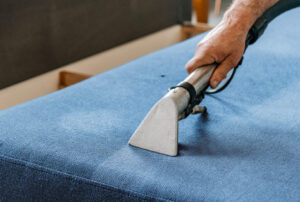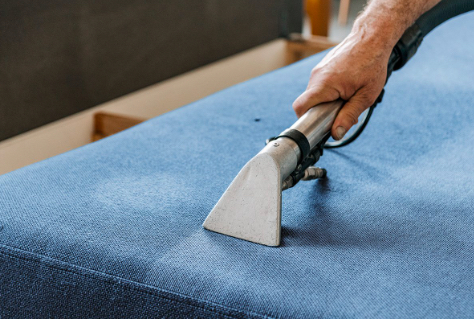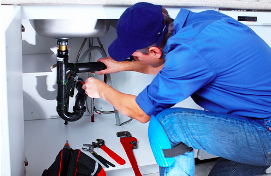From muddy paw prints to food stains, regularly cleaning your upholstery is a great way to keep it looking its best and smelling fresh. Upholstery Cleaning Perth immediately also decreases the chances they will permanently set in. Each piece of American-made furniture has a tag with a code to help you determine the appropriate cleaners. Typically, codes W and S indicate that water-based products are okay, while codes X or W-S indicate you should only use dry cleaning solvents.
Baking Soda Paste
 Baking soda is a natural cleaner that is safe and effective on fabric upholstery. It works as an abrasive to scrub away dirt and grime, and it is also highly absorbent. Baking soda can also help to neutralize odors from your couch. It does this by balancing the acidity of bad smells. You can find baking soda in your kitchen, and it is inexpensive. This makes it a great alternative to commercial cleaners, as you can make it yourself with ingredients you likely already have on hand.
Baking soda is a natural cleaner that is safe and effective on fabric upholstery. It works as an abrasive to scrub away dirt and grime, and it is also highly absorbent. Baking soda can also help to neutralize odors from your couch. It does this by balancing the acidity of bad smells. You can find baking soda in your kitchen, and it is inexpensive. This makes it a great alternative to commercial cleaners, as you can make it yourself with ingredients you likely already have on hand.
To use baking soda to clean your fabric couch, sprinkle it liberally over the entire surface of the sofa and let it sit for 20-30 minutes. You can even leave it on overnight if needed. Make sure you do not rub, as this could damage the fabric. Instead, use a brush or cloth to work the baking soda into the fabric. You can do this in small, circular motions to ensure you are releasing the dirt and not just pushing it into the upholstery.
After you have used the baking soda to remove as much dirt and stains as possible, vacuum up the rest of the powder. If you have stubborn stains, you can repeat the process with a more concentrated paste. For this, mix a tablespoon or so of baking soda with water until it forms a thick consistency. You can also try using a paste made of equal parts vinegar and water. The vinegar and baking soda have opposite extremes on the pH scale, so they create a fizzy reaction that breaks apart stains.
The resulting solution will then be more easily able to penetrate and lift the stain. After you have soaked up as much of the solution as possible, you can use a damp microfiber cloth to wipe it away. Then, vacuum up any remaining baking soda and allow your furniture to dry completely.
If you want to prevent your upholstery from getting soiled again, consider applying a fabric protector spray once it is completely dry. This will keep any future stains from setting into your fabric and will extend the life of your furniture.
Rubbing Alcohol
A bottle of rubbing alcohol is an inexpensive way to clean a variety of surfaces, including fabric upholstery. It is often the best way to get rid of greasy, soiled spots and also can work on ink stains that may be permanent. Rubbing alcohol does have its own odor that can be unpleasant, so it is best to use it in combination with other cleaning ingredients. The best part is that rubbing alcohol dries quickly, so you can continue working on your couch while it works.
Before you get started on rubbing alcohol, be sure to run a vacuum cleaner or lint roller over the entire surface of your couch. This will remove a lot of general dirt, food crumbs and hairs. If you have a white cloth, you can test the furniture to see if it can be cleaned using the methods listed below. Most fabric couches will have a tag with a cleaning code, which can be W (wet), S (solvent), SW (water-based) or X (no cleaning). If your couch is marked W, you can usually safely use water-based cleaners and steamers on it to remove stains.
If your couch is labeled S, you can still spot clean it with a mild detergent and water. However, you must do this in a well-ventilated room because solvents will shrink and fade fabrics. Rubbing alcohol can be used to clean and remove grease stains from most fabrics, but it is best to sprinkle the area with talcum powder or cornstarch first. This will absorb the oil and help prevent the stain from spreading.
You can also use rubbing alcohol to remove stubborn sticky residue from a variety of surfaces, including doorknobs and countertops. It can also be used to wipe down stainless steel. If your rubbing alcohol mixture isn’t strong enough, you can add baking soda to it to create a more effective cleaner. You can also add your favorite essential oils to the mix to give the cleaner a fresh scent. You can choose from lemon, orange and other citrus scents for your DIY solution.
White Vinegar
White vinegar has a number of practical household applications that have nothing to do with food. It’s an effective cleaner and disinfectant, plus it can help remove stains from many surfaces. White vinegar is also inexpensive compared to other commercially available cleaning agents and can be found in almost any grocery store.
Vinegar is a safe and natural way to clean upholstery, especially when mixed with other ingredients like baking soda. This solution can be used to remove stains, neutralize odors and deodorize the entire sofa.
To make this cleaner, combine rubbing alcohol, white vinegar and water in a spray bottle and shake well. Spray the mixture on soiled areas of upholstery and scrub lightly with a microfiber cloth or old rag. Let the cleaner rest for a minute or two and then use a wet cloth to wipe it away. Be sure to blot dry the fabric immediately after cleaning.
Another common household item that can be used to clean upholstery is distilled white vinegar. Distilled white vinegar is made from corn, fermented and then diluted to about 6% acidity. This type of vinegar is typically labeled “food grade” and can be used in cooking, but it’s also excellent for cleaning. Heinz has been making distilled white vinegar since 1869, so you can feel confident that it’s safe to use in your home.
This DIY cleaner is a great option for those looking to cut down on their exposure to chemical products. It contains a combination of natural cleaning ingredients and can be easily made at home. This cleaner is easy to use and works on most upholstery types.
To make this cleaner, mix equal parts rubbing alcohol and white vinegar in a spray bottle. Spray the solution on soiled upholstery and rub lightly with a wet cloth or old rag. When you are done, blot the fabric with a paper towel to absorb excess moisture. This cleaner is a good choice for those with allergies, as it doesn’t contain any harsh chemicals. It’s also a good choice for those who are concerned about the environmental impact of purchasing and using commercially made cleaners.
Water
While carpets and tile get all the attention when it comes to cleaning, upholstered furniture gets dirty, too. Couches and loveseats collect body soil, from sweat to dead skin cells and pet dander, that builds up over time and makes your furniture seem tired and worn out. Regular upholstery cleaning removes these particles, leaving the fibers soft and smelling fresh.
Most professional upholstery cleaners use water to clean fabric couches and loveseats. They may also add mild detergent or bleach to the solution to help sanitize and brighten the furniture. The type of water used is important because hard water can leave soap suds that make the fabric stiff and scratchy. Professionals also use a high-powered extraction system to agitate the furniture and flush out dirt and grime.
Before using a homemade or store-bought upholstery cleaner, check the label to be sure it’s safe for your type of fabric. Many upholstered pieces of furniture have a code on the tag that indicates whether it can be cleaned with water or solvents. Look for codes like W or SW, which means that the fabric is safe to be cleaned with water-based cleaners. If the tag has an X on it, avoid washing or cleaning the fabric because the chemicals can damage and fade the cushions and the backing of the piece.
When a stain occurs on your upholstery, you can spot treat it with a mixture of water and dishwashing liquid or a commercial spray cleaner meant specifically for upholstery. Mix the cleaner with a little water in a clear spray bottle so you don’t oversaturate the cushion, and apply it to the stain. Let the cleaner sit for a few minutes to loosen soil, then gently scrub the area with a brush or a sponge. Rinse the fabric with clean water, and blot it dry with a clean cloth or towel.
Regularly removing dust, pet dander and other allergens from the fabric of your sofa keeps it looking great and helps keep you healthy. Upholstery cleaning also extends the life of your furniture, keeping it looking new and smelling fresh.

